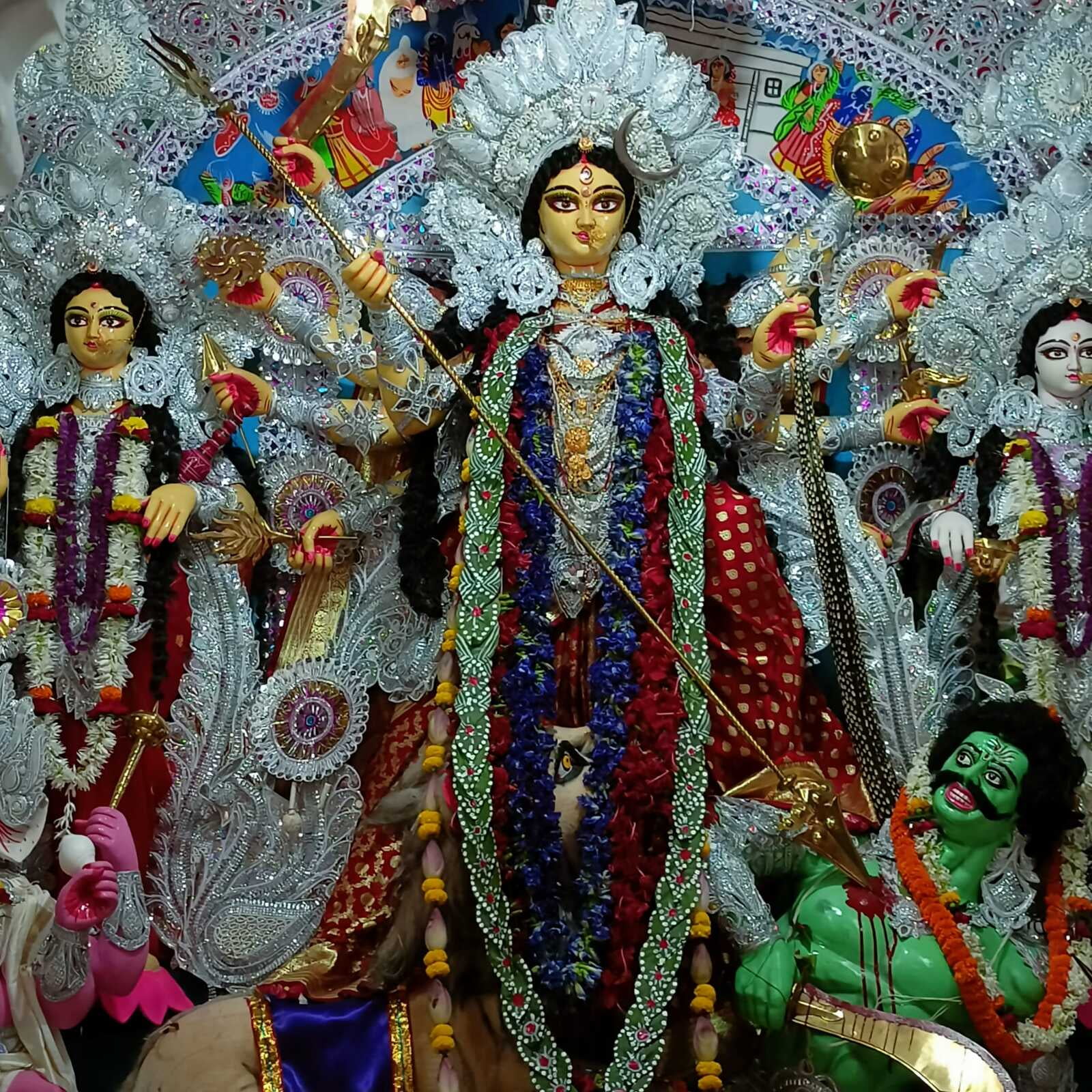Activities Durga Puja
Sri Sri Durga Puja

Durgotsava in the city of Lord Vishwanath has a special significance both religiously and socially. After Belur Math, the headquarters of Ramakrishna order, if the Durga Puja of any branch is regarded as the most ancient and traditional, it is that of Kashi Ramakrishna Advaita Ashrama. In the year 1908 on the special request of Pulin Babu (a devotee), Swami Brahmananda ji arranged for the first Durga Puja to be performed in image (pratima) here. After this, in the year 1913 on the special prayer of Nistarini Devi, the wife of Sri Navgopal Ghosh (a devotee of Sri Sri Thakur), Raja Maharaj himself made special arrangements for Durga Puja to be performed in Pratima itself and was physically present during the entire celebration. Since then, every year Durga Puja is being held perpetually at the historical Durga Mandap located in the Ashrama in a grand refulgent idol conventionally made on a single base (Ek Chala). The tradition of performing Kali Kirtan during Durga Puja originated from here itself. Even today, Kashi Advaita Ashrama has a different identity among the three popular schools (gharanas) of Kali Kirtan in the Ramakrishna Sangha. Sadhus of Sevashrama use to practice Kali Kirtan every year prior to the Puja and when the chorus is sung collectively in the mandap, the atmosphere seems to be mesmerizing and infusing a new life filled with unbounded ecstasy. There is a practice of performing tantric homa on Navami, but only in Kashi Advaita Ashrama, Vedic Hawan (यजर्वेु र्वेदीय कुशकण्डिका) was done under the supervision of learned sanyasis and Sanskrit pundits of Kashi. On the Shasthi tithi vishal Sadhu Bhandara is organized for the sadhus of Dashanami Sampradaya (monks in the tradition of Acharya Shankar) including some other groups of monks who maintain close relation with the Ashrama. Nearly three thousand devotees partake anna bhog prasad (cooked lunch Prasad) in the noon on all the three days of the mahapuja i.e. saptami, mahashtami and mahanavami. Devotees come from far and wide to see the unique beauty of Kumari Puja. The evening aarti is performed by the pujari (the worshiper or the priest), the tantradharak (monk who chants mantras) and the chandi pathak (monk who recites Sri Sri Chandi or Devimahatamaya) mutually together. On Vijaya Dashami, after immersion of the idol, shantijal is sprinkled on the devotees. Hence, the Durga Puja of Kashi Advaita Ashrama has its own tradition, uniqueness and importance in Ramakrishna Math & Mission. Even the common mass of Kashi consider their Navratri to be incomplete without having the darshan of the magna-mater videlicet Maa Durga at Advaita Ashrama as there is a general belief among them that the worship of Kaudiya Hospital (as localite refer to Sevashrama) is performed with complete devotion adhering to the shastric tradition. Devotees from different parts of the city and nation at large alike experience a magnetic pull and frequent the ashrama year after year on during Durga Puja.







